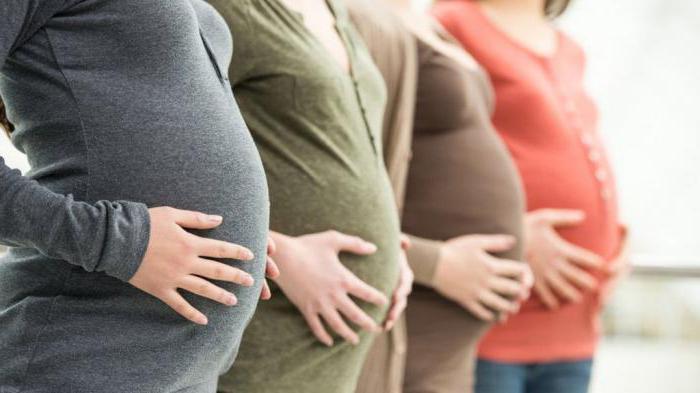This article will address the issue of weak labor. We will tell you in detail about the causes, symptoms, consequences and resolution of labor.

To denote what it is. Weak labor is a lack of uterine activity. That is, childbirth is difficult and prolonged, since the uterus is contracting poorly, the cervix opens with difficulty and the fetus comes out very slowly and difficultly. Childbirth does not always go well, as expected, there are abnormalities in labor. You will learn about one of them in great detail from this article.
Weak labor
No matter how sad this sounds, anomalies of labor are quite common. The reasons for this phenomenon are quite numerous. Now we will talk about the weakness of the birth process.

This is one of the possible violations of labor. With this diagnosis, the contractile function of the uterus, which is necessary for the expulsion of the fetus, is weakened. This is due to:
- low tonus of the myometrium ;
- rare contractions;
- weak amplitude of contractions;
- the prevalence of diastole;
- the period of contractions lags significantly behind the period of relaxation;
- delayed opening of the cervix;
- slow fetal advancement.
In more detail, the symptoms will be presented in another section. Now we give some statistics. This diagnosis in obstetrics and gynecology is the most popular, since it is a very frequent complication of childbirth and the cause of various pathologies of both the mother and the child. Statistics claim that more than seven percent of births are complicated precisely by the weakness of labor. And one more fact: this diagnosis is established more often for women who give birth to their first child. As a rule, subsequent births take place without any difficulties, however, there are cases of diagnosing weakness of labor and subsequent births.
Causes
We explained what is the weakness of labor. The reasons can be many factors. We suggest listing them. The reasons for the weakness of labor can be:
- morphological inferiority of the uterus;
- insufficiency of hormonal regulation of the birth process;
- functional inertia of nerve structures;
- extragenital diseases;
- hypoplasia
- myoma;
- chronic endometritis;
- adenomyosis;
- two-horned uterus;
- saddle uterus;
- medical abortion;
- curettage;
- conservative myomectomy;
- scars after treatment of cervical erosion (if the woman has not given birth before).
Some other reasons can be noted. Weak patrimonial forces may occur due to a disturbance in the balance of factors that influence patrimonial activity. The positive factors include the following:
- prostaglandins;
- estrogens;
- oxytocin;
- calcium;
- picks and so on.
Negatively affect:
- progesterone;
- magnesium;
- enzymes that destroy mediators and others.
It is very important to note that women suffering from some disorders (vegetative-metabolic) often encounter this problem during childbirth. Such violations include:
- obesity;
- hypothyroidism;
- hypofunction of the adrenal cortex;
- hypothalamic syndrome.
The age of primiparous has a great influence. If the girl is very young or her age exceeds 35 years, then labor can be difficult. The period at which labor activity began also matters. Weakness of the uterus can be a cause of a postponed pregnancy or premature.
If the pregnancy is multiple, then this pathology is possible during childbirth. With multiple pregnancy, uterine overstrain occurs. Overstretching can also occur with a large fetus or polyhydramnios.
Often, miniature girls encounter difficulty in labor, as a narrow pelvis also causes a weak uterus. The reason is the imbalance between the size of the child and the pelvis of a woman.

The reasons are still very numerous, unfortunately, it will not be possible to list everything. Now we highlight some of the most popular of them:
- overwork;
- mental stress;
- physical exercise;
- poor nutrition;
- lack of sleep;
- fear of childbirth;
- the discomfort;
- poor maternity care and so on.
Thus, all causes can be classified as follows:
- on the part of the mother;
- pregnancy complications;
- on the part of the child.
Kinds
Weak labor can occur at any stage of labor. In this regard, it is customary to highlight some types of weakness:
- primary;
- secondary;
- weak attempts.
We offer a little detail to consider each species separately.
The primary weakness of labor is characterized by inactive contractions in the first stage of labor. They are very weak, short and not at all rhythmic. It is important to note that with primary weakness, an underestimated uterine tone (less than 100 mmHg) is noticed. At this stage, the woman is able to diagnose the problem herself. How to do this? Track ten minutes and count the number of bouts for this period. If the number does not exceed two and you practically do not feel them, then the diagnosis was confirmed. You can measure the time of one fight, it should be more than 20 seconds in the absence of weakness of labor. Diastole, or the period of rest, is almost twice as long. How can the sensibility of contractions speak of a problem? Everything is simple, if they are painless or not painful, then the pressure from the uterus is not enough to open the cervix.

Secondary weakness of labor is characterized by a weakening of the intensity of the uterus. Before this fight could be normal. The reasons for the development are the same as with the primary weakness of the patrimonial forces. Another indicator is the progression of the opening of the uterine pharynx. If progress is not visible after five to six centimeters of disclosure, then we can confidently talk about secondary hypotonic uterine dysfunction.
If primary and secondary weakness is observed in ten percent of cases of unfavorable birth and is characteristic of primiparous, then weakness of the labor period is extremely rare (two percent of all cases of difficult birth), and it is characteristic of women with multiple births or with obesity.
Symptoms
Symptoms of primary weakness in labor include:
- decreased uterine excitability;
- decreased uterine tone;
- reduced frequency of contractions (up to two in ten minutes);
- short duration of contractions (up to twenty seconds);
- the force of contractions does not exceed 25 mm Hg. st .;
- short period of reduction;
- extended rest period;
- there is no increase in intensity and frequency;
- painless or painless contractions;
- delayed change in the structure of the cervix (this includes shortening, smoothing and opening).
All this can significantly increase the total time of birth. This, in turn, affects the mother and the child badly. The woman in labor is greatly overworked, possibly an early expulsion of the waters.
Symptoms of secondary weakness:
- weakening of the intensity of contractions (possibly even their complete cessation);
- weakening tone;
- decreased excitability;
- there is no progression of the opening of the uterine pharynx;
- stop the advancement of the fetus through the birth canal.
This is no less dangerous than primary weakness. The child may develop asphyxia, or he may die. For mom, it is dangerous with the probability of infection of the uterus, birth trauma. Prolonged standing of the baby's head in the birth canal can lead to the formation of hematomas or fistulas.
Diagnostics
This section will focus on diagnosing the problem of weakness (primary and secondary) labor. The diagnosis of primary weakness is made on the following basis:
- decrease in uterine activity;
- reduced neck smoothing rate;
- delayed opening of the uterine pharynx;
- long standing of the fetus;
- increased delivery time.
It is important to note that a partogram (or graphic description of childbirth) has a great influence on the diagnosis. In this diagram, everything is indicated:
- neck opening;
- fetal advancement;
- pulse;
- pressure;
- baby's heartbeat;
- contractions and so on.
If there is no progress in opening the cervix for two hours, which is clearly shown in the partogram, then this diagnosis is made.
Diagnosis of secondary weakness is based on these indicators:
- partogram;
- CTG;
- listening to the heartbeat.
This is necessary so that the fetus does not develop hypoxia. There are some difficulties in the birth process that are symptomatically similar to weakened labor. These include:
- pathology of the preliminary period ;
- discoordination of labor;
- clinically narrow pelvis.
Treatment
It is important to note that treatment is selected individually for each woman in labor. During treatment, the doctor must take into account all the data that he has (the state of the woman and the baby).

A good remedy for weak labor is the technique of drug sleep. For this, special drugs are introduced so that the woman rests, then labor can intensify.
If this does not help, then resort to a puncture of the fetal bladder. After this procedure, labor becomes much more intense. It is worth noting that the puncture is carried out only if the neck is ready.
Sometimes doctors resort to drug stimulation. Now we will briefly consider the drug "Miropriston" to stimulate childbirth. This drug should be taken strictly under the supervision of doctors. It suppresses progesterone, which has a beneficial effect on the contractile activity of the uterus.
Delivery
If no methods have helped, including Miropriston, to stimulate labor, the doctor can perform an emergency caesarean section. What techniques are performed before the operation:
- drug sleep;
- amniotomy;
- drug stimulation.
In addition, there may be additional indications for the operation. There is a list of contraindications to stimulation of labor (narrow pelvis, uterine scarring, life threatening, and so on).
Prevention

We examined in detail the issue of weakness of labor. Clinical recommendations for prevention can be given by the obstetrician-gynecologist who leads your pregnancy. He should talk about possible complications during childbirth and conduct physical and psychological preparation of the woman in labor. In addition to rhodostimulation, prevention of possible complications in the fetus is necessarily carried out.
Effects
What are the complications of labor weakness? For mom, it can be:
- hematoma formation;
- fistula formation;
- possible infection.
The following complications are possible for a child:
- hypoxia;
- acidosis;
- cerebral edema;
- death.
It all depends on the professionalism of the doctor. With proper stimulation and precise monitoring of the condition of the child and mother, there should not be any consequences.
Forecast
Now briefly about predicting the weakness of labor. As mentioned earlier, it all depends on the professionalism of the doctor and the psychological state of the woman. Do not panic, but listen to the recommendations of a specialist. Complications after obstructed labor are quite rare.
The course of subsequent birth

The weakness of labor during the first birth does not mean that all subsequent ones will proceed in the same way. Primary and secondary weakness is often found in women who give birth to their firstborn. In a small percentage of multiparous, a weak period of labor may be noted.